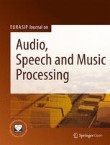Frequency-dependent auto-pooling function for weakly supervised sound event detection
Sound event detection (SED), which is typically treated as a supervised problem, aims at detecting types of sound events and corresponding temporal information. It requires to estimate onset and offset annotat...
